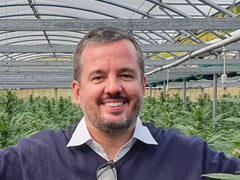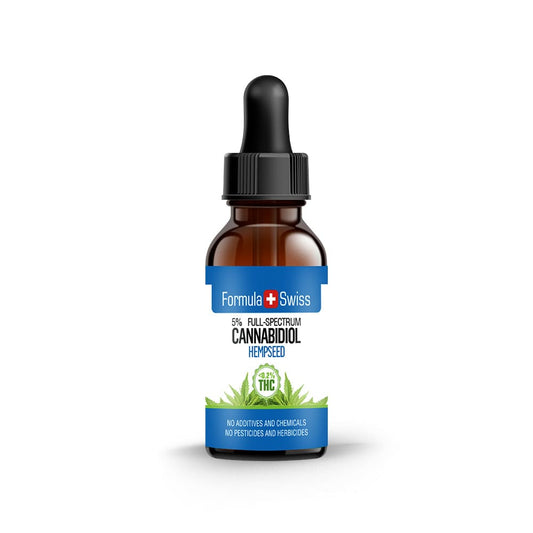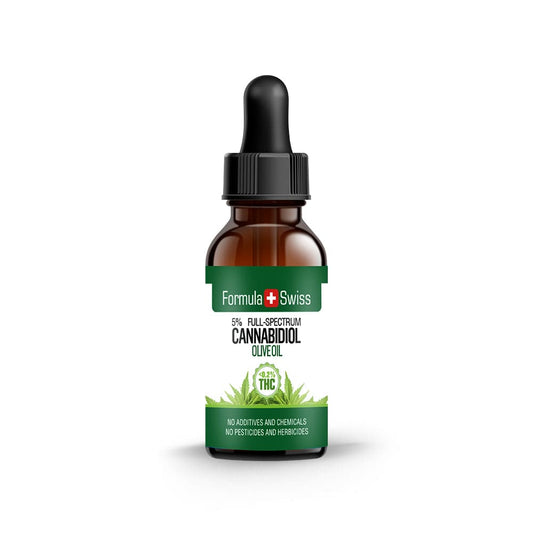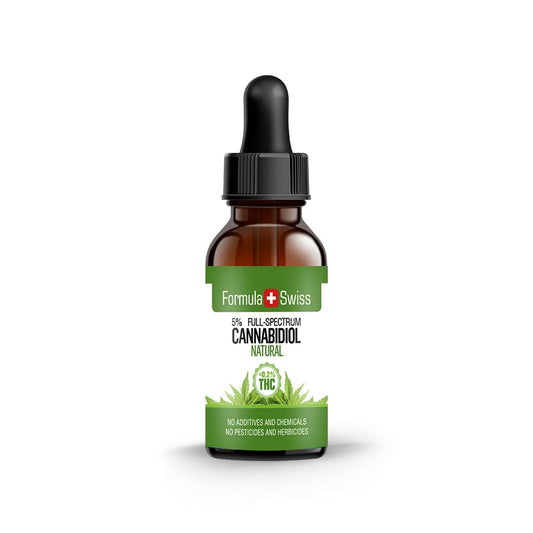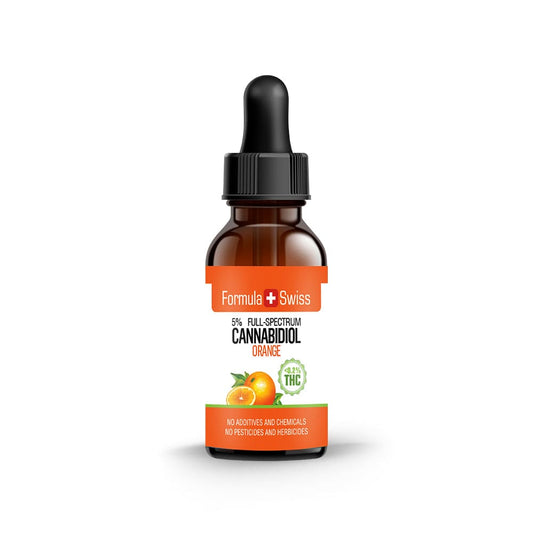A person was recently caught in Chapainawabganj, Bangladesh, with two kilograms of hemp. Many might think of it as illegal, but hemp is a plant with wide industrial relevance.
I've seen the cannabis industry change a lot over the past decade, and as someone who has spent more than ten years working within this field, particularly in CBD and hemp cultivation, I’ve had the opportunity to witness firsthand how misconceptions often cloud public understanding of hemp.
Hemp has been used for thousands of years and is valued for both environmental and industrial purposes. Hemp seeds are nutrient-rich, highlighting how hemp is both practical and, at times, misunderstood. It grows efficiently without excessive chemical input, making it relevant to sustainable farming.
This plant represents a shift toward environmentally responsible industries. Hemp is influencing multiple markets and offers a case study in ecological innovation. Chapainawabganj highlights the continuing discussion about its place in environmental strategies and its broader significance.
Save up to 30% when you order your CBD oil today
Key takeaways
- Hemp's varied applications highlight its significant distinction from psychoactive cannabis varieties.
- Hemp cultivation serves as a model for sustainable agricultural methods.
- Understanding hemp's properties can help clarify common misconceptions.
- Hemp seeds are widely used in food manufacturing due to their nutritional profile.
- Hemp's industrial versatility is contributing to its commercial growth.
- Hemp’s role in ecological discussions continues to expand.
This article is provided for informational purposes only and does not relate to any of the products available in our webshop. For more information, please see our full disclaimer.
The historical significance of hemp
Hemp has a long history, dating back thousands of years. It was a vital resource in ancient civilisations, used in agriculture, textile production, and traditional practices.
Hemp's ancient roots and uses
About 10,000 years ago, early farmers cultivated hemp, demonstrating its long-standing role in agriculture. Archaeological evidence from China and the Middle East shows its application in fabric production and ceremonial contexts.
Hemp was also historically used in wellness traditions. Although ancient records suggest it played a role in addressing discomfort, such historical use does not indicate modern therapeutic efficacy.

The evolution of hemp through the ages
Over time, hemp’s durability made it a preferred material for sails and ropes, supporting maritime exploration. This demand contributed to the early expansion of the hemp economy.
Today, hemp is used in biofuels, insulation, and compostable plastics, offering alternatives to conventional materials. This highlights hemp’s environmental potential.
The shift toward more sustainable options has bolstered hemp’s modern role. Cultivation requires fewer agrochemicals, preserving soil and water health.
There has also been renewed research interest in hemp’s components. A 2024 study published in Archives of Gynecology and Obstetrics is assessing its relevance in specific scientific and medical contexts. are assessing its relevance in specific scientific and medical contexts. However, product use should always follow guidance and disclaimers.
Studying hemp’s past helps inform future applications. Its evolution shows how longstanding materials can adapt to modern challenges.
Understanding hemp
When discussing hemp, it is essential to understand that it comes from the Cannabis sativa plant but contains low levels of THC. This makes it non-intoxicating and suitable for industrial purposes.
Hemp supports a wide range of industries through textiles, biodegradable materials, and eco-conscious product development. Its reduced need for chemicals enhances its appeal as an environmentally sound option.
Hemp is increasingly viewed as an economic opportunity. The rise of hemp-based products points to a broadening market scope. Key applications include:
- Clothing and textiles: Durable and sustainable fabric from hemp fibres.
- Construction materials: Hempcrete offers a lightweight alternative to concrete.
- Nutrition: Hemp seeds are used in a variety of food products due to their protein and fatty acid content.
- Bioplastics: Hemp-derived plastics help address the need for compostable materials.
Despite differing approaches across regions, hemp’s industrial relevance continues to grow across many sectors.
| Sector | Use of hemp | Impact |
|---|---|---|
| Textiles | Clothing production | Reduced environmental footprint |
| Construction | Building materials | Lower carbon output |
| Food industry | Seed-based products | Alternative nutritional source |
| Energy | Biofuels | Renewable energy input |
The growth and diversification of hemp products are contributing to more sustainable practices. They reflect hemp's growing role in modern industries, highlighting its utility and adaptability.
The nutritional profile of hemp seeds
Hemp seeds are gaining attention for their nutritional properties. They originate from the Cannabis sativa plant and are known for containing plant-based protein, omega fatty acids, and essential nutrients. The following highlights their nutritional characteristics.

Plant-based protein in hemp
Hemp seeds are a source of plant-derived protein. With approximately 10 grams per three tablespoons, they include all nine essential amino acids. This makes them a complete protein option and relevant to plant-based dietary choices.
A rich source of omega fatty acids
Hemp seeds provide a balanced ratio of omega-3 and omega-6 fatty acids. This composition is uncommon in the plant kingdom and is valued by those seeking plant-based nutritional alternatives.
Vitamins and minerals in hemp seeds
According to a 2025 study published in the journal Foods, Hemp seeds contain magnesium, phosphorus, and potassium. These micronutrients are part of various biological functions related to metabolism and cell health.
They can be incorporated into recipes such as smoothies, salads, and baked goods, offering flexibility in how they are used in food preparation. Their nutritional profile supports a broader interest in plant-based, natural ingredients.
Order and enjoy up to 30% off your CBD oil purchase
Environmental impact of hemp cultivation
Hemp cultivation is becoming increasingly recognised for its role in sustainable agriculture. It grows efficiently and typically requires fewer inputs than conventional crops, making it suitable for eco-conscious practices.
The crop requires less water and does not rely on intensive pesticide or herbicide application. These characteristics align with environmentally responsible farming.

Hemp's role in sustainable agriculture
According to a 2024 study published in Frontiers in Environmental Science, hemp supports soil structure and helps reduce erosion. Its deep root system stabilises soil and contributes to better water retention, reinforcing its place in sustainable crop rotation strategies.
Water usage and hemp farming
Hemp’s water needs are significantly lower than many traditional crops. This efficiency makes it particularly suitable for areas facing water scarcity. Additionally, hemp’s carbon uptake capacity adds value in carbon-conscious agriculture.
Distinguishing hemp from CBD and cannabis
Understanding the distinctions between hemp, CBD, and cannabis involves examining chemical properties, use cases and how they are treated within the industry. These distinctions influence everything from agricultural practices to broader operational decisions.
The chemical differences
Hemp typically contains less than 0.3% THC by dry weight and is mainly grown for its fibre and seeds. CBD is a compound present in both cannabis and hemp, commonly extracted for use in a variety of product formats. Unlike THC, CBD does not produce intoxicating effects and is approached differently across various contexts.
This chemical distinction plays a role in how products are classified and understood across different areas. Hemp is primarily used in industrial applications, while CBD is formulated into cosmetic, topical, or other non-intoxicating formats.
Different uses of hemp
The Cannabis sativa plant is used to produce a range of products: industrial hemp for use in textiles and raw materials, CBD for structured non-intoxicating applications, and recreational cannabis products with higher levels of THC. Each category is approached differently depending on its intended use and context.
Various uses of hemp
Hemp is highly adaptable and has numerous industrial applications. Its sustainable growth and utility make it attractive for eco-forward innovations. From textiles to construction, hemp supports multiple sectors.

Hemp in textile manufacturing
Hemp is widely used in textiles due to its strength, durability, and resistance to mildew. It provides a renewable alternative to synthetic fibres, and its cultivation has a lower environmental impact.
The role of hemp in construction material
Hempcrete, made from hemp hurds mixed with lime and water, is valued for its thermal and acoustic insulation. It also sequesters carbon during its curing process, contributing to environmentally responsible construction practices.
| Material | Qualities | Applications |
|---|---|---|
| Hemp fibres | Durable, strong, eco-friendly | Clothing, bags, home textiles |
| Hempcrete | Thermal insulating, acoustic properties, carbon-negative | Building walls, insulation systems |
The versatility of hemp positions it as a leading material in sustainable innovation, with growing interest from industries seeking eco-conscious alternatives to traditional materials.
The global hemp industry and market trends
The global hemp industry is growing fast, becoming a key player in sustainability and eco-awareness. Hemp farming is contributing to more sustainable agricultural systems and the development of environmentally conscious materials worldwide.
Hemp market trends indicate a growing shift toward eco-responsible solutions. As recognition of hemp’s environmental advantages increases, its role across various sectors continues to expand.
| Aspect | Details |
|---|---|
| Market expansion | Commercial growth across multiple regions, including Asia and Europe. |
| Guidelines and industry standards | Ongoing developments are opening up new opportunities in cultivation and expanding the scope of industrial applications. |
| Environmental impact | Reduced resource requirements and positive biodiversity contributions. |
| User demand | Increased interest in eco-conscious materials and products. |
| Technological innovations | Advancements in farming and processing methods are improving efficiency. |
This overview illustrates how operational structures, environmental needs, and user preferences are shaping the hemp industry. With the expansion of hemp cultivation, the industry shows strong prospects for sustainable growth and commercial relevance.
Order CBD oil now and save as much as 30%
Global perspectives on hemp production
Approaches to hemp cultivation and processing differ widely across regions. For industry professionals, recognising these distinctions is important, particularly for growers, processors, and product developers.
In various parts of the world, policies surrounding hemp have changed over time. For example, Australia permits the use of hemp seed derivatives in specific product categories, though certain applications, such as animal feed, remain limited. This illustrates how practices and guidelines can differ internationally.
Influence of evolving policies on hemp markets
Updates to hemp-related guidelines can impact both local and global markets. Developments in regions like Australia and Colorado demonstrate how such changes may affect cultivation methods and product applications.
The level of clarity provided by these policies often reflects wider conversations within society and industry. As understanding grows, these updates can encourage economic growth and innovation in the hemp sector.
Hemp products and their commercial relevance
Hemp-based items are gaining traction in commercial markets. From plant-derived oils used in cosmetics to biodegradable plastics and fibre-based materials, these products reflect hemp’s industrial utility and environmental alignment.
Hemp oil and its applications
Hemp oil, obtained from seeds, is widely used in cosmetic formulations and personal care items. It contains omega fatty acids and other plant compounds that are valued in topical and skincare applications.

Materials derived from hemp
Beyond personal care, hemp is also utilised in the manufacture of biodegradable packaging and lightweight construction materials. These options support cost-effective, eco-friendly alternatives to traditional manufacturing inputs.
Market growth is driven by business interest and increased awareness of sustainability. Companies are investing in hemp innovations as part of their commitment to responsible production.
General applications of hemp
Hemp offers a variety of applications in areas such as nutrition, skincare, and textile production. It is increasingly valued for its compatibility with balanced diets and eco-conscious formulations.
Hemp and nutrient content
Hemp seeds contain omega-3 and omega-6 fatty acids, which are recognised as important components of general nutrition. These fatty acids are incorporated into diets aimed at achieving balanced macronutrient profiles.
According to a 2024 systematic review published in the journal Molecules, hemp seeds are notably rich in polyunsaturated fatty acids, such as linoleic acid (omega-6) and alpha-linolenic acid (omega-3), with a reported 3:1 ratio commonly cited in nutritional references.
Topical application and skincare relevance
Hemp-derived ingredients such as gamma-linolenic acid (GLA) are included in topical formulations, including creams and lotions. These are commonly marketed for their emollient and soothing properties.
Dietary inclusion for general well-being
Hemp seeds are often used in food products due to their macronutrient composition. They provide a source of plant-based protein and fatty acids. These properties make them a practical addition to recipes that prioritise nutrient variety.
Hemp and digestive balance
Hemp seeds contain both soluble and insoluble fibre. Soluble fibre contributes to gut microbiota balance, while insoluble fibre is recognised for its bulking function in general dietary contexts.
| Seed type | Protein (per serving) | Fibre | Fatty acid content | Notable features |
|---|---|---|---|---|
| Hemp seeds (30g) | 9.48g | 30%-40% | Rich in omega-3 and omega-6 | Balanced macronutrient source |
| Chia seeds (28.35g) | 5g | High in soluble fibre | Moderate omega-3 | Often used in hydration-based recipes |
| Flaxseeds (28.3g) | 4g | High in both fibre types | High in omega-3 | Requires grinding for optimal benefit |
This comparison highlights how hemp can contribute to a fibre-rich and balanced nutrient profile when used appropriately in meals or product development.
Hemp and cognitive focus
Hemp seeds are a source of essential fatty acids such as omega-3 and omega-6, which are often included in diets intended to support balanced mental function. These components play recognised roles in nutrition linked to brain development and maintenance.
| Nutrient | Function | Contextual benefit |
|---|---|---|
| Omega-3 fatty acids | Structural role in cell membranes | Supports overall cell function |
| Omega-6 fatty acids | Contributes to biochemical signalling | Part of the general metabolic pathways |
| Gamma-linolenic acid (GLA) | Fatty acid found in oils | Used in topical and dietary formulations |
| Magnesium | Involved in over 300 enzymatic reactions | Supports general physiological function |
While more research is needed to understand specific cognitive links, the inclusion of hemp-derived components in balanced nutritional strategies is an area of ongoing study and product development.
Hemp’s contribution to dietary balance
Hemp seeds are being incorporated into nutritional plans due to their macronutrient composition. High protein and fibre levels may contribute to feelings of satiety when included in meals, supporting regulated dietary intake.
The presence of both omega-3 and omega-6 fats is also of interest to nutritionists aiming to design energy-balanced diets. These attributes may contribute to more varied dietary formulations and meal options.

Hemp seeds are noted for their nutritional content, which includes fibre, protein, and essential fatty acids. The presence of both soluble and insoluble fibre contributes to balanced digestion and satiety. Their nutrient composition supports general dietary needs.
- Dietary fibre: Contains both soluble and insoluble types, supporting digestive regularity and fullness.
- Protein: A source of complete plant-based protein that contributes to general tissue maintenance.
- Fatty acids: Balanced omega-3 and omega-6 profiles contribute to standard nutritional frameworks.
These components make hemp seeds a practical option in balanced meal planning. Their inclusion in food products supports macronutrient diversity and fibre intake.
Hemp research and innovations
The future of hemp includes increasing research in genetics, cultivation techniques, and industrial applications. A 2020 study published in the journal Molecules highlights growing global investment into hemp-related fields over recent years.

The industry is expanding across areas such as cosmetics and textiles. For example, textiles utilising hemp have demonstrated reductions in water usage and emissions. These indicators support hemp's role in sustainable material innovation.
In structured health-related fields, research into hemp’s potential continues to progress. Although certain studies are examining its properties under controlled conditions, these investigations remain exploratory. Any future application would depend on further validation before being considered for practical use.
Personal perspective
Over the years, I’ve developed a strong appreciation for its practical possibilities and the complexities that often come with it. In my experience, the plant’s real value lies not just in what it can produce, be it fibres, oils, or seeds, but in the sustainable agricultural practices it encourages.
I've spent countless hours in cultivation fields and production facilities, and the consistency with which hemp thrives across varied environments continues to impress me. It's a crop that, when handled responsibly, offers solutions to real-world industrial challenges.
What often frustrates me, however, is the confusion that persists between hemp and marijuana. Despite being genetically distinct and serving entirely different purposes, hemp is still viewed with suspicion in many places.
This misunderstanding has tangible effects, not only for farmers striving to establish credible operations but also for those shaping clear and balanced industry frameworks. Through ongoing education and transparent industry practices, I believe we can bring greater clarity to hemp’s identity and potential.
Don’t miss out—save up to 30% when you purchase CBD oil today
Frequently asked questions
What is hemp?
Hemp is a variety of the Cannabis sativa plant grown for industrial purposes, including its fibre and seeds. It has diverse applications across textiles, construction, and food industries.
Is hemp the same as marijuana?
No. Hemp and marijuana are both Cannabis sativa, but differ significantly in chemical composition. Hemp contains very low levels of THC (tetrahydrocannabinol) and is used for non-psychoactive applications.
Is hemp environmentally friendly?
Yes. Hemp requires fewer pesticides and less water than many traditional crops. It also contributes to soil stability and can be integrated into regenerative farming systems.
What is the difference between hemp seeds and hemp hearts?
Hemp seeds are whole, while hemp hearts are the dehulled inner portion. Hemp hearts are softer and more commonly used in culinary preparations.
Is hemp nutritious?
Hemp seeds provide a source of plant-based protein, fibre, and essential fatty acids. They also contain vitamins and minerals such as vitamin E, iron, and magnesium.
Can hemp be used for animal feed?
Yes. Hemp by-products such as meal from seed pressing can be incorporated into animal feed for livestock and pets, depending on accepted industry practices.
How is hemp oil extracted?
Hemp oil is typically extracted using cold pressing or CO₂ extraction. These methods aim to preserve the oil's natural composition and quality.
What is the difference between hemp oil and CBD oil?
Hemp oil is derived from the seeds and is used in nutritional and industrial contexts. CBD oil is extracted from the leaves and flowers and has a different cannabinoid profile.
Can hemp be used in construction?
Yes. Hemp can be processed into materials such as hempcrete, which is used in insulation and wall systems for sustainable construction.


